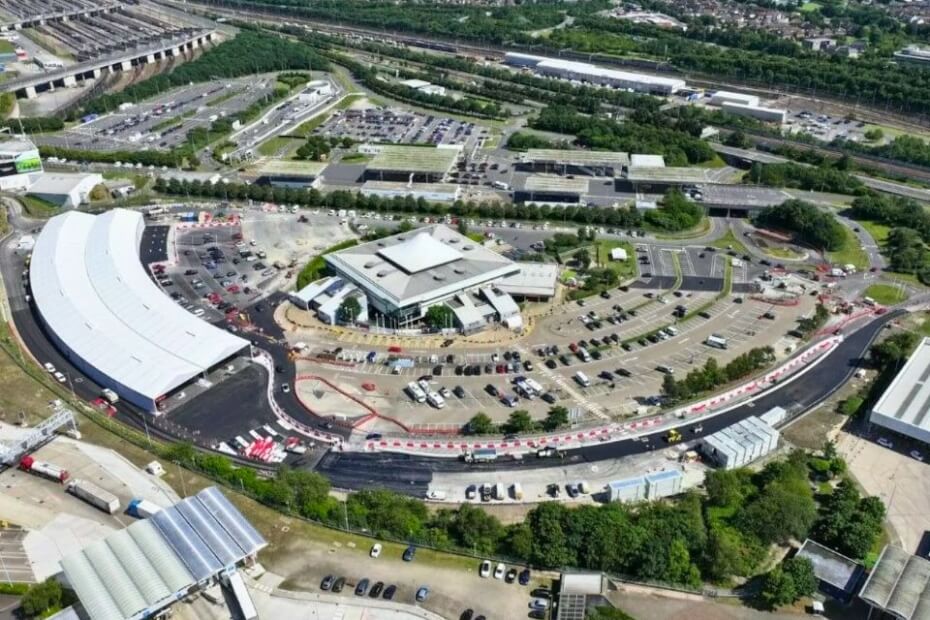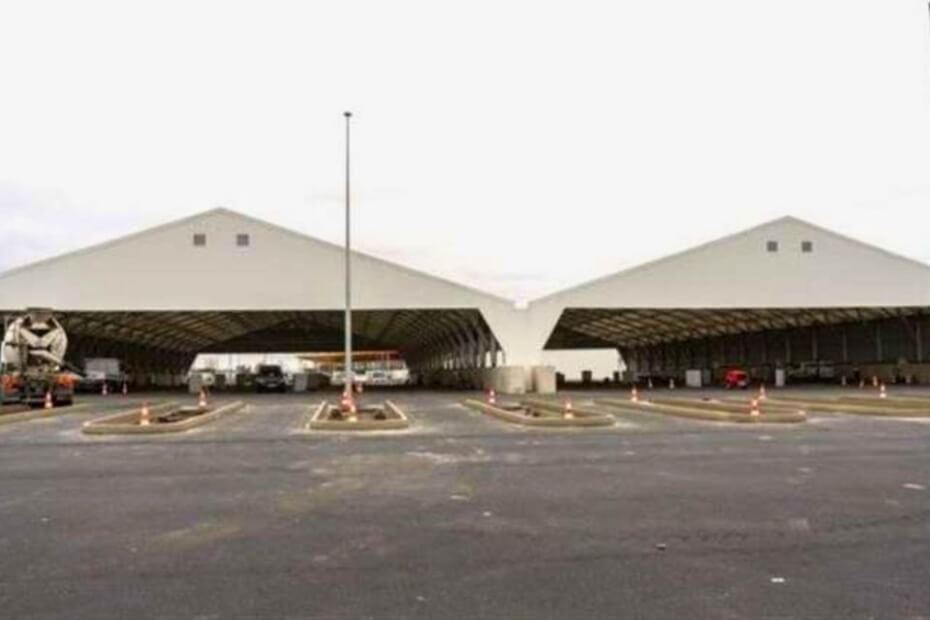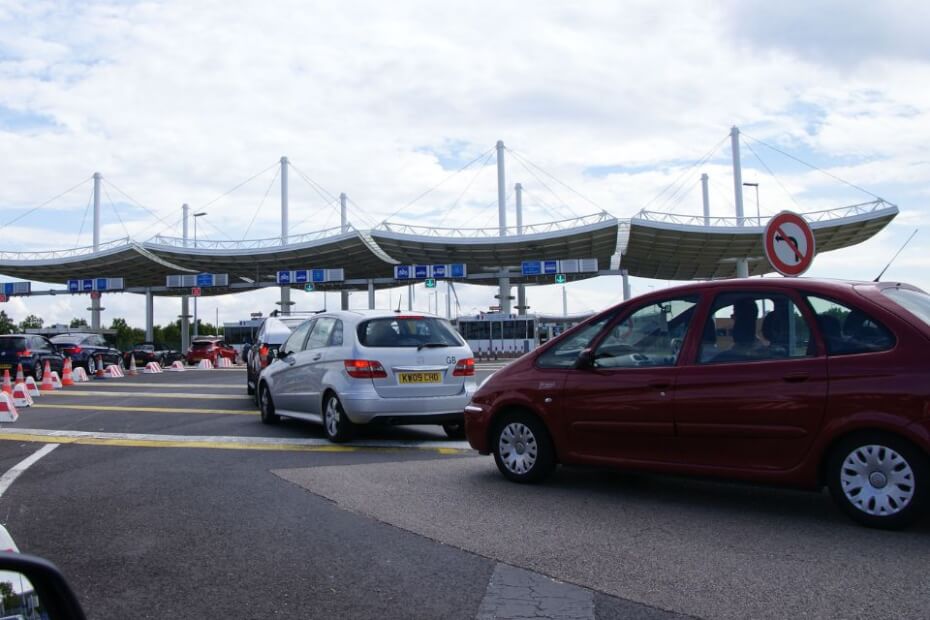
Border crossings are fast-tracking preparations for the launch of the new European Union (EU) Entry/Exit System (EES).
Getlink, the operator of the Channel Tunnel (formerly Eurotunnel), is installing 224 more EES kiosks to ensure smooth and efficient travel.
This significant technological upgrade is already underway at its Folkestone terminal in preparation for the 10 November EES rollout.
This move is part of a broader effort to adapt to the new EU border system that will significantly impact travel.
What more EES kiosks means for travelers
The EES is a new automated border check system that will replace manual passport stamping at the EU’s external borders.
With the new system, non-EU travelers must record biometric data upon entry and exit from the EU.
The biometric data, which includes fingerprint scans and facial recognition photos, will be stored in a centralized database.
The EES aims to tighten security across the Schengen Area. It is designed to help authorities identify and track individuals entering and exiting the region.
This new requirement marks a significant change for those crossing the border via the Eurotunnel.
Travelers will need to factor in extra time for the initial biometric data registration when the EES rolls out.
Under EU laws, this initial biometric registration must be done before an EU border officer.
They must also be prepared to wait for travelers to record biometric information, especially during busy travel periods.
Specially designed EES kiosks for vehicle travelers
To handle new biometric check requirements, Getlink has invested in installing 224 EES kiosks at Folkestone in the United Kingdom (UK).
The goal is to avoid any potential delays that could arise from the additional checks required by the EES.
These new kiosks are designed to process up to 2,000 passengers or about 700 vehicles per hour.
They are specifically designed to accommodate vehicle travelers, unlike the typical kiosks in airports intended for foot traffic.
This design consideration was crucial, as the Channel Tunnel is a unique travel route where most passengers are in vehicles rather than on foot.
Getlink noted that during the testing phase, volunteers found the biometric equipment to be “modern, fast, and easy to use.”
The company emphasized the need for more EES kiosks to minimize delays and ensure a smooth transition to the new system.
New infrastructure to help prevent long queues

Getlink has also substantially improved the driving facilities at the Folkestone terminal and the French border crossing terminal at Coquelles.
It has completed building over 7,000 square meters of new covered drive-through bays to provide “all-weather protection” for travelers.
This infrastructure is expected to streamline the traffic flow and reduce possible congestion at the border once the EES starts.
The company has also introduced a dynamic signage and intelligent lane allocation system at Folkestone.
This system works in conjunction with the information passengers provide when they book their tickets.
Upon arriving at check-in, a camera reads the vehicle’s number plate and matches it with the passenger data entered during booking.
The system then directs the vehicle to the correct lane and guides travelers to the appropriate kiosks based on their status or nationality.
This intelligent lane allocation system is vital to Getlink’s strategy to keep traffic moving smoothly through the terminals.
The system reduces bottlenecks by presorting vehicles and directing them to the correct lane, especially during peak travel times.
The goal is to ensure that all travelers, whether frequent commuters or occasional tourists, experience minimal disruption as the EES starts.
Concerns about potential challenges
Installing new EES kiosks and infrastructure is a significant step toward EES preparations.
Still, there are broader concerns about the EES’s impact on travel through the Eurotunnel and other ports.
The concern about the potential for longer queues at border crossings remains even after more preparations.
The additional time required to collect biometric data could slow down traffic flow, particularly during peak travel times.
Given that the Eurotunnel is a major route for both passengers and freight, any delays could have a ripple effect.
A few minutes of added processing time for each passenger could add up and impact schedules, causing travelers to be frustrated.
There are also worries about the limited time available to test the new system.
While Getlink has conducted initial tests, the actual test will come when the EES is fully operational and processing thousands of travelers daily.
Any technical glitches or inefficiencies could lead to significant delays, especially during peak periods.
The EES will require travelers to be patient and adapt to new procedures as the system is fine-tuned.
Funding and potential increase in travel cost

The UK has pledged £10.5 million in funding to help with EES compliance and allocated £3.5 million explicitly for the Channel Tunnel.
Getlink will use the funds to install and test the new technology at its UK terminal and recruit and train staff whose focus will be to assist EES passengers.
Since the beginning of the EES preparations, the company has invested more than £70 million to ensure travelers do not experience delays.
Still, there are concerns that the costs of maintaining and operating the new EES kiosks and infrastructure could impact the cost of travel.
The full impact of the EES will only become clear once the EES system goes live in November.
While all preparations are intended to ensure a smooth transition, travelers should be prepared for potential adjustments.

